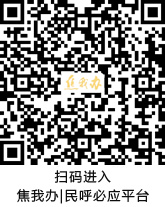

时政要闻
Editor's note: Confirmed by historic documents, archaeological excavations and oracle bone inscriptions as the capital site of the late Shang Dynasty (1600-1046 BC), Yinxu or the Yin Ruins is usually regarded as the cornerstone of the project on tracing the origins of Chinese civilization launched by China in 2001. As a key component of world civilization, it has provided solid evidence for the continuity and pluralistic and integrated pattern of Chinese civilization, bringing recorded Chinese history nearly 1,000 years earlier than previously believed. Starting on October 25, we are launching a series of videos about Yinxu to help you gain a deeper understanding of it. Here is the third episode: Hou Mu Wu Ding - The Largest Bronze Vessel Excavated in China.
编者按:作为中国历史上第一个有文献记载并为考古发掘与甲骨文所证实的都城遗址,殷墟是中华文明探源工程的原点和基石,是中华文明连续不断、多元一体的重要实证,也是世界文明史中重要一环。殷墟及甲骨文的重大发现把中国信史向前推进了近千年,同时,因其具有全球突出普遍价值而被列入《世界遗产名录》。为更好讲述中国故事、让世界读懂中国,10月25日起,河南国际传播中心、大河网联合殷墟景区共同推出“走进殷墟”双语系列报道。今日推出第三期:《后母戊鼎:青铜器里的终极大BOSS》。
The bronze vessels of Yinxu are the pinnacle of bronze development in China and even in the world. Between 1928 and 1986, archaeologists excavated over 3,560 bronze vessels and weapons at Yinxu. The world-renowned Hou Mu Wu Ding (also known as Si Mu Wu Ding, a sacrificial vessel crafted as a burial tribute), which weighs 875 kg, is not only dignified in form, but also elegant in ornamentation, with complex craftsmanship. lt is the crowning glory of ancient bronze vessels in the world.
殷墟青铜器在中国乃至世界青铜器发展史上都是一个高峰。据统计,1928年至1986年间,仅正式考古发掘出土的青铜礼器、兵器就达3560件以上。 举世闻名的后母戊鼎(又称司母戊鼎),不仅造型庄重威严、纹饰华美典雅、冶铸工艺复杂,更以其875公斤的重量位居世界青铜器之冠。(赵汉青 杨佳欣)
 |
 |
 |
|
||||
| 焦作网免责声明: | ||||||||
|
||||||||
Editor's note: Confirmed by historic documents, archaeological excavations and oracle bone inscriptions as the capital site of the late Shang Dynasty (1600-1046 BC), Yinxu or the Yin Ruins is usually regarded as the cornerstone of the project on tracing the origins of Chinese civilization launched by China in 2001. As a key component of world civilization, it has provided solid evidence for the continuity and pluralistic and integrated pattern of Chinese civilization, bringing recorded Chinese history nearly 1,000 years earlier than previously believed. Starting on October 25, we are launching a series of videos about Yinxu to help you gain a deeper understanding of it. Here is the third episode: Hou Mu Wu Ding - The Largest Bronze Vessel Excavated in China.
编者按:作为中国历史上第一个有文献记载并为考古发掘与甲骨文所证实的都城遗址,殷墟是中华文明探源工程的原点和基石,是中华文明连续不断、多元一体的重要实证,也是世界文明史中重要一环。殷墟及甲骨文的重大发现把中国信史向前推进了近千年,同时,因其具有全球突出普遍价值而被列入《世界遗产名录》。为更好讲述中国故事、让世界读懂中国,10月25日起,河南国际传播中心、大河网联合殷墟景区共同推出“走进殷墟”双语系列报道。今日推出第三期:《后母戊鼎:青铜器里的终极大BOSS》。
The bronze vessels of Yinxu are the pinnacle of bronze development in China and even in the world. Between 1928 and 1986, archaeologists excavated over 3,560 bronze vessels and weapons at Yinxu. The world-renowned Hou Mu Wu Ding (also known as Si Mu Wu Ding, a sacrificial vessel crafted as a burial tribute), which weighs 875 kg, is not only dignified in form, but also elegant in ornamentation, with complex craftsmanship. lt is the crowning glory of ancient bronze vessels in the world.
殷墟青铜器在中国乃至世界青铜器发展史上都是一个高峰。据统计,1928年至1986年间,仅正式考古发掘出土的青铜礼器、兵器就达3560件以上。 举世闻名的后母戊鼎(又称司母戊鼎),不仅造型庄重威严、纹饰华美典雅、冶铸工艺复杂,更以其875公斤的重量位居世界青铜器之冠。(赵汉青 杨佳欣)
|
||||
| 焦作网免责声明: | ||||||||
|
||||||||
|
|